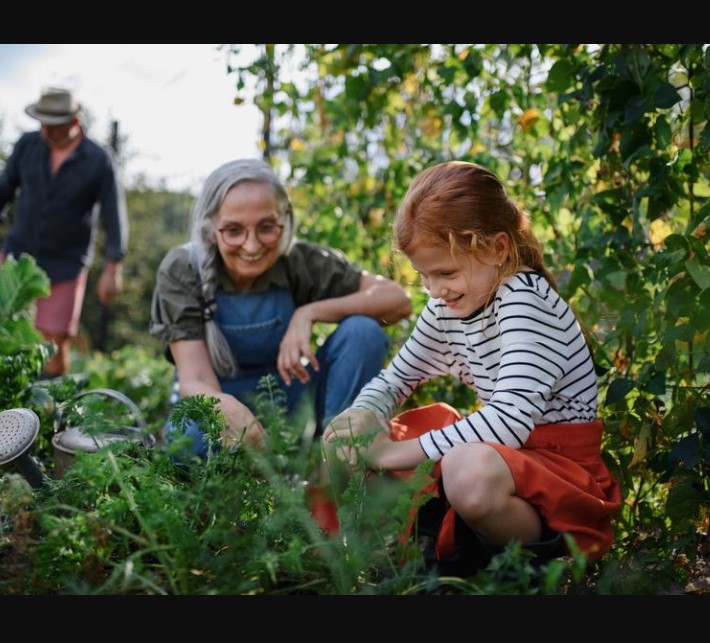In an era where environmental consciousness is at its peak, sustainable gardening stands out as a beacon of hope, offering a way to nurture both the Earth and our well-being. Beyond mere aesthetics, sustainable gardening embodies a harmonious relationship between humans and nature, fostering biodiversity, conserving resources, and mitigating climate change. This article aims to delve into the principles and practices of sustainable gardening, highlighting its significance in promoting a greener, more resilient future.
Understanding Sustainable Gardening:
At its essence, sustainable gardening is about working in tandem with nature rather than against it. It entails employing methods that minimize environmental harm while maximizing plant and wildlife benefits. Key principles include:
Biodiversity Preservation:
Sustainable gardens prioritize biodiversity, recognizing the interconnectedness of all living organisms. By incorporating a variety of plant species, gardeners create habitats for pollinators, birds, and beneficial insects. Native plants, in particular, play a crucial role in supporting local ecosystems, requiring fewer resources and attracting indigenous wildlife.
Soil Health:
The health of the soil forms the foundation of a thriving garden ecosystem. Sustainable gardeners practice soil conservation techniques such as composting, mulching, and minimal tillage to enhance soil structure, fertility, and water retention. Avoiding chemical fertilizers and pesticides preserves the delicate balance of microorganisms essential for nutrient cycling and plant health.
Water Conservation:
Sustainable gardening emphasizes efficient water management strategies in regions prone to drought and water scarcity. These include installing rain barrels, drip irrigation systems, and drought-tolerant plant species. Mulching also helps to reduce evaporation and maintain soil moisture levels, promoting resilient plant growth with minimal water usage.
Energy Efficiency:
Reducing energy consumption in garden maintenance is another cornerstone of sustainability. Opting for manual or low-energy tools over mechanized equipment minimizes carbon emissions and reduces noise pollution. Solar-powered lighting and water features offer eco-friendly alternatives, harnessing renewable energy to enhance garden aesthetics.
Practical Applications of Sustainable Gardening:
Implementing sustainable gardening practices is rewarding and feasible for gardeners of all skill levels. Here are some practical tips to cultivate a more eco-conscious garden:
Selecting Native Plants:
Choosing indigenous plant species adapted to the local climate, soil, and wildlife preferences reduces water, fertilizer, and maintenance requirements. Native plants foster more extraordinary biodiversity and resilience in the garden ecosystem.
Composting:
Transforming kitchen scraps, yard waste, and fallen leaves into nutrient-rich compost naturally enriches soil fertility, reducing landfill waste and the need for synthetic fertilizers.
Water-Wise Gardening:
Incorporating drought-tolerant plants, grouping species with similar watering needs, and employing water-saving techniques like drip irrigation and rainwater harvesting conserve water. Mulching with organic materials retains soil moisture and suppresses weed growth.
Integrated Pest Management (IPM):
Managing garden pests without harmful chemical pesticides involves encouraging natural predators, planting pest-resistant species, and manually removing pests when necessary.
Creating Wildlife Habitats:
Providing food, water, shelter, and nesting sites for local wildlife enhances biodiversity in the garden. Features such as bird feeders, butterfly gardens, bee hotels, and native hedgerows attract and support diverse fauna.
Benefits of Sustainable Gardening:
The benefits of sustainable gardening extend beyond individual gardens, enriching communities and ecosystems. Notable advantages include:
Environmental Conservation:
Sustainable gardening contributes to global efforts to combat climate change, conserve water resources, and protect biodiversity. Green spaces within urban landscapes mitigate heat island effects, reduce air pollution, and enhance urban resilience.
Health and Well-being:
Gardening improves mental health, reduces stress, and enhances overall well-being. Sustainable gardens provide tranquil spaces for relaxation and connection with nature.
Community Building:
Sustainable gardening fosters a sense of community and shared responsibility for environmental stewardship. Community gardens are hubs for social interaction, education, and collective action.
Conclusion:
Sustainable gardening embodies the ethos of living in harmony with nature, cultivating resilience, and nurturing vibrant ecosystems for future generations. By embracing principles of biodiversity preservation, soil health, water conservation, and energy efficiency, gardeners can contribute to environmental stewardship and promote a greener, more sustainable future. Whether tending to a backyard plot, rooftop garden, or community greenspace, each act of sustainable gardening plays a part in cultivating harmony between humans and the natural world.

